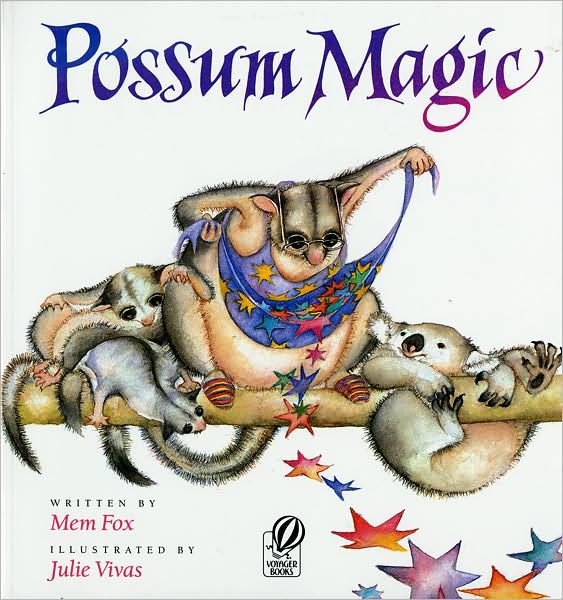Monday, June 18, 2012
Time For Bed
Author : Mem Fox
Illustrator : Jane Dyer
Publisher : Houghton Mifflin Harcourt
ISBN : 9780152881832
(Buy / Borrow)
Having been asked to respond to the question, “Is this an author you would like to read more from, and why?” after listening to a reading of Time For Bed written by Mem Fox, illustrated by Jane Dyer, and published by HMH Books, my answer is absolutely and unequivocally YES! So far, I've read several of her books and I find her knack for developing engaging text completely irresistible. What has endeared Mem Fox to me so much more than her amazing talent for writing children’s books, however, is reading about the way she creates her stories.
On her website, www.memfox.net, she recounts a little bit of the tale of how Time For Bed came to be. “I was preparing a workshop one night for junior primary (lower elementary) teachers. My aim was to demonstrate ‘group writing’. I thought if I could find two good rhyming lines to start with we could finish the story together, much as the teachers might, with their own children in class. So I came up with:
‘It’s time for bed, little mouse, little mouse,
Darkness is falling all over the house.’
I liked it but wondered how difficult it would be to finish. Would the teachers and I be able to do it? I decided to try to finish it myself to see how hard it would be. I was so pleased with the first draft I read it to Malcolm who was crazy about it and said: ‘I think you’ve just written another book.’”
I can honestly say that I’ve read over this entry on Mem Fox’s website as much as I’ve read and reread the copy of Time For Bed that I found and purchased at Barnes and Noble this week, and with as much joy. It is truly something special when you are able to see someone doing what comes naturally, and so well, without even trying! It’s these special bits of a creator’s personality that help to make books like these memorable experiences for children. For instance, the Mem Fox of my childhood is American author and illustrator Richard Scarry. Quite by chance, my sister and I received a copy of his Best Word Book Ever, and from then on, we were hooked on everything he produced.
I will definitely be adding copies of Wilfred Gordon McDonald Partridge, Possum Magic, Wombat Devine, Shoes From Grandpa, and Hattie And The Fox to my collection of books, and I have a feeling that, as I become more acquainted with the other books from Mem Fox’s catalog, I will be adding many of them as well.
Even if I don’t end up teaching in the lower elementary grades, these books can still be very useful. During some time spent observing a fifth grade class, for instance, I noted that the teacher would select and read a children’s book each day after her students returned from recess as a way to center and refocus them. It was an amazingly effective technique, and I look forward to using it in my own classroom someday.
Monday, March 05, 2012
The House In The Night (2009 Caldecott Medal Winner)
Author : Susan Marie Swanson
Illustrator : Beth Krommes
Publisher : Houghton Mifflin Harcourt
ISBN : 9780618862443
(Buy / Borrow)
Upon reading The House In The Night written by Susan Marie Swanson, illustrated by Beth Krommes, and published by Haughton Mifflin Harcourt during today, it immediately made me think of another children’s picture book that I’d read while caring for the young daughter of a friend. I was incredibly thrilled then, that I'd decided that this post’s theme was to be of the text to text comparison nature.
The other piece of literature to which I am referring is a book entitled All The World, written by Liz Garton Scanlon, illustrated by Marla Frazee, and published by Beach Lane Books. As I’ve recently learned, it is one of the Caldecott Honor recipients for 2010, although the copy I had the pleasure of exploring with my friend’s child did not reflect this fact. The way the story line moves is reminiscent of the aforementioned Caldecott Award winner. Additionally, I find the expansion of the illustrations of both books, which incorporate incrementally larger views of their respective environments, to be similar in nature.
I do have slightly more of a preference for The House In The Night’s imagery and the way in which that imagery corresponds to the symmetry of the storyline. I also feel that Krommes’s application of a lack of color with the exception of yellow representing “the light” to be genius in its simplicity despite its distinct ability to relate to and broaden that storyline so comprehensively. There is little for anyone to wonder about with regard to the book’s worthiness of the Caldecott Award.
That being said, I still have nothing but high praise for the creators of All The World. The poetic beauty of Scanlon’s lyrical styling and depth shine as brightly as “the light” from The House In The Night, and Frazee’s artful illustration of sweeping panoramic vistas add any and every last bit of detail for young imaginations to feast upon visually.
Having had the experience I did with this book, I’m going to make a point of paying extra close attention not only to those illustrated books that have received the topmost of Caldecott honors, but also those that were in contention for the gold medal as well. There is a wealth of extremely valuable and superbly assembled work to be explored and I surely would be remiss if, due to any lack of effort on my part, I did not take advantage of the opportunity to become acquainted with it.
Learning of and understanding about how these two books relate with one another is useful to me as a future teacher of young children, but it is also useful to me as someone who reads. I would not have been able to convey this experience and extend it to my students, had I not already worked through an exercise such as this text to text comparison.
Friday, January 20, 2012
Possum Magic
Author : Mem Fox
Illustrator : Julie Vivas
Publisher : Houghton Mifflin Harcourt
ISBN : 9780152632243
(Buy / Borrow)
Possum Magic by Mem Fox is an excellent example of children’s literature in my opinion. I’m a big fan of any kind of literature, fiction or non-fiction, that introduces the reader to surroundings that are different than the world in which they currently live. This is especially important during the earlier years of our lives, when our neurological physiology is undergoing such rapid development. Experiencing varied imagery and thought processes while we are young will help our brains adapt and accommodate many thoughts, ideas, and points of view, which in turn, will make us more well-rounded individuals over the course of our lives.
Books like these were a staple of my youth, and I attribute a significant amount of my achievements academically to the care my parents took in helping my sister and I to build our personal libraries as we grew. I remember having picture books that taught us about the Eiffel tower in Paris and Big Ben in London, and I loved when my parents would sit with us before dinner and read them to us. After a while, once we already knew the story and would remember it, they would add information that wasn’t contained within the books. For instance, moving through the book about London and Big Ben lead to questions and conversation about Winston Churchill, World War II, The Beatles, monarchy, and, from what I can remember, American History. The stories in that book expanded to include history and facts that only increased the curiosity that my sister and I had about the world, the differences between its various countries, and the lives and ideas of notable individuals throughout.
Later, in elementary school grades two through five, we were lucky enough to use a series of reading comprehension workbooks (although at the moment, the name escapes me), which also introduced us to people and places that were foreign to us. I remember learning about the famous Chinese American architect I. M. Pei, a skyscraper called the Bank of China Tower that he designed, and how he oversaw its construction. I also remember how amazing it was to me that he was born in China, a place I had never been, but also studied at MIT and Harvard in the United States, which were places I’d heard about more frequently. It definitely helped me to develop my own view of the world and how the pieces of the huge puzzle that I knew as the globe fit together.
Just as the books my parents shared with my sister and I brought about questions from us that served to expand the stories further than the pages inside a children’s book, I see Possum Magic providing that same level of depth. I can easily picture a child asking questions such as “Where is Brisbane”, or “What is Vegemite”, that over the course of time, will turn into a surprising amount of gained knowledge for that child or children.
Labels:
1991,
animals,
approach to education,
children's literature,
chinese,
elementary education,
fiction,
illustrator,
Julie Vivas,
Lanza,
Mem Fox,
picture book,
Possum Magic,
questioning,
teaching
Subscribe to:
Posts (Atom)


